GSA Prices
Achieving success in government contracting heavily relies on GSA Pricing, which serves as a pivotal factor. GSA mandates that your proposal to them must present more competitive pricing than what you offer in the commercial realm. To secure approval for your price proposal from GSA and effectively compete with fellow GSA contractors, conducting thorough market research and evaluating various factors is essential.
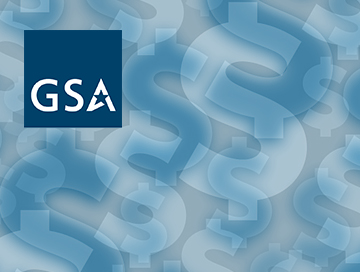

- Evaluate your GSA Prices by comparing them with the best on GSA.
- Skillfully negotiate your prices with GSA.
- Facilitate the seamless uploading of your revised prices to GSA Advantage.
- Execute diligent Market Research.
| Price Rank | Current Ranks | Ranks After Optimization | ||
| Number of Products | % | Number of Products | % | |
| Best Price | 0 | 0 | 0 | 0 |
| 2nd Price | 0 | 0 | 0 | 0 |
| 3rd Price | 0 | 0 | 0 | 0 |
| 4th - 10th Price | 0 | 0 | 0 | 0 |
| 11+ Price | 0 | 0 | 0 | 0 |
| No Competition | 0 | 0 | 0 | 0 |
| Your Product List | Competition |
|
||||||||||||||||||||||||
|
|
|||||||||||||||||||||||||
Warning
It will take up to a few minutes to generate the report.
Contact us at 201.567.6646 or provide your details below for one hour free consultation
with GSA
Awarded
Served
under
Management
Modifications
Completed
Processed
Rating
What is GSA pricing mean?
The term “GSA pricing” means the price a GSA contractor offers to the GSA. There is a certain policy regarding GSA pricing that is based on a simple principle: the government is the Most Favored Customer (MFC). This means that if you sell to the government, you must offer to them at least the same or better prices, as you offer on the commercial market. Additionally, the government wants volume discounts and a GSA procurement officer will negotiate such a discount when you submit your offer.
Who qualifies for GSA pricing?
The GSA inspects every GSA application closely to make sure each contractor is reliable, financially stable, has capabilities to fulfill its obligations under the GSA contract, and can offer the best price. Specifically, a company must be in business for at least two years before applying for a contract, display a firm revenue (at least $25,000/year), and have no debts. Sure enough, the company must be officially registered, have a tax ID, and an overall good past performance and experience.
Is a GSA contract worth it?
While achieving a GSA contract will not be a cakewalk, we strongly recommend for you to consider this option. There are a number of substantial benefits that holding a GSA contract entails:
- Big sales and big budgets. Total GSA sales in 2020 were $36 billion.
- Relatively low competition compared to the commercial market.
- A secured GSA contract typically lasts for 5 years with three options to renew for another 5 years.
- There are set-aside contracts for small business and disadvantaged businesses. About 80% of GSA contracts are awarded to small businesses. In FY 2020 these contracts provided 37% of the overall sales volume through the GSA Schedule.
If you are not sure, whether your company qualifies for GSA contracts, please contact Price Reporter and we will gladly help you consider such an opportunity.
Who can buy from the GSA Advantage?
The GSA Advantage platform allows federal government entities to purchase products and services using GSA SmartPay, GSA Activity Address Code (AAC) or Department of Defense Activity Address Code (DoDAAC).
State and local government can also purchase through the GSA Advantage, as a part of the Cooperative Purchasing Program and the Disaster Recovery Purchase Program.
How many GSA schedules are there?
Previously, there were 31 GSA Schedules. After the GSA MAS Consolidation in 2019-2020 there are 12 large categories left under one consolidated Schedule.
Price Reporter team has been efficient at managing our GSA contract catalogs for the past 5 years. They keep our catalogs well maintained and compliant, saving our resources and letting us focusing on making sales.
The B. David Company enlisted the services of Price Reporter, Inc. to setup our DOD EMALL account. We are a second generation family owned company and were uncertain what would be required to complete this task. I fully recommend Price Reporter, Inc. to any company that is looking for assistance with their Government business endeavors. They were and have continued to be extremely helpful. We will continue to rely on Price Reporter, Inc. for future projects.

Price Reporter recently helped us with our 3rd GSA contract, the 2nd they did with us. It was the fastest we’ve ever been through the process with GSA. Each step was easy because the ground work was done before we were asked to do anything. Our pricing verification phase went smooth and quickly and both our contracts were accepted without rejection, with minimal negotiations with contracting.

We first learned about the DOD EMALL a couple years ago from Price Reporter. We decided to move forward on it in 2016. I would recommend them based on the following items:
- They split the payment. Half upfront and the other half is only charged should DOD EMALL contract be awarded to you.
- Adding Price Reporter, specifically Andrey Karpov and Igor London, as agents on our GSA schedule streamlined the process. They were able to communicate with our GSA Contracting Officer to ensure that we received what we needed for DOD EMALL from GSA. This saved time on my end and sped up the process.
- They provide a list of everything you need. Andrey and the rest of his team are meticulous and understand the process on how to get a DOD EMALL contract and thus we benefited from their expertise.
These are a few of the reasons why I would recommend Price Reporter, Inc. Thank you!
Since 2009, Price Reporter has provided Fisher Scientific timely competitive item level GSA pricing data allowing us to identify opportunities and threats. Their customer service focus is solid.
Price Reporter are helping make my life much easier and helping me feel so much better about our GSA contract. Thanks!!!

For the past 10 years, Price Reporter has been providing us with exceptional service for the maintaining of our GSA office supplies contract. They have updated our files on a very timely basis. They have provided modifications when required. For a number of years, they had been giving us a price algorithm where each of our items were priced more than our cost and a penny below the next competitor. A very unique position that gave us thousands of government orders – that was prior to the GSA FSSI BPA.
And for all the service given, their cost was far less than any other consulting firm that we had contacted or worked with over the years.
I would highly recommend their service to any small business that is either interested in getting into the federal government arena or who wants to have their contract maintained at a most highly professional level.
Thank you for supporting a VETERAN OWNED SMALL BUSINESS.
We looked around for a reputable company to help us acquire a GSA contract for Muzeek World Intl., Inc. After looking around we were unsuccessful in finding a good company. By chance, one of our colleagues recommended Price Reporter, Inc., so we called them up. I highly recommend Price Reporter to anyone looking for help in acquiring a GSA contract or any Government business dealings. They have the expertise and the know-how to get the work completed.
We have used Price Reporter for various services over the past 5 years and have been very happy with the services they have provided and continue to provide for us. They work hard to help you get the most from your GSA Schedule and are able to adapt and customize to what your particular needs are. I highly recommend their services to others with GSA Schedules as they help you maximize your sales

We are extremely grateful for all your help in guiding us through the whole process, as this was all new to us. Without the help of you and the rest of the team at Price Reporter, it would have been impossible to achieve our approval – or at the very least – it would have taken a very long time. I would not hesitate to highly recommend Price Reporter, Inc. to anyone needing assistance in government contracts. Your knowledge and assistance was invaluable and very much appreciated, and we look forward to a continued excellent relationship.
Without Price Reporter contacting me at the right time, GSA would probably cancel my contract already. The CO said that she contacted us back in November of 2016, but got no response. Then Price Reporter called me and helped me with all the things needed and I followed his advise. That’s how we found out that our contract will be terminated soon, but had enough time to take the corrective action. The CO called us recently and it looks like they will extend our contract life. Thanks so much for your timely follow up – Price Reporter gave our Government sales a new hope!

My company STEC-STEADFAST TECHNICS have worked with 2 IT companies before we linked up with PRICE REPORTER ,INC over 5 years ago. Ever since our relationship with the company, there is no reason to stop working with them.
The company is staffed with experienced and high Tech professionals who meet our needs adequately.


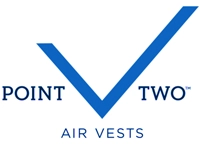

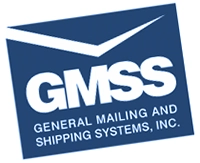

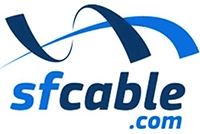


















GSA prices, or General Services Administration prices, are standardized rates negotiated by the GSA for a wide range of products and services available to federal agencies.
These prices are designed to offer government entities competitive and cost-effective options when making purchases. GSA’s price negotiations with suppliers ensure that government agencies can access goods and services at pre-negotiated rates, simplifying procurement processes and saving taxpayers money. These prices are typically available through GSA Schedule contracts, making it easier for federal agencies to acquire the resources they need while adhering to budget constraints, and promoting efficiency in government spending.
HOW TO SELL COMPETITIVELY ON GSA
- Recipe for Success: Competitive prices drive success;
- Challenge: Maintaining a competitive edge with a large number of products is challenging;
- Solution: Price Reporter has the solution.
FIND OUT IF YOUR PRICES COMPETE WELL ON THE FEDERAL MARKET
Your prices must be competitive in comparison to other contract holders, while still being advantageous to your company. And if your GSA price list contains thousands of items, maintaining a competitive edge with all of the products quickly becomes challenging, to say the least.
Price Reporter offers a simple GSA pricing tool to quickly estimate how well you are doing against your competitors. Surely, GSA Advantage allows viewing GSA prices online, but when it comes to comparing a lot of contracts and SINs, you need a much more effective option.
HOW TO BUILD YOUR GSA PRICING STRATEGIES
The GSA pricing policy implies that a vendor must offer its best price to the government.
Specifically, You should offer the GSA at least the same or better prices that you do to your Most Favored Customer (MFC). Unfortunately, this clause is often interpreted as “the lowest possible price.” Wrong.
The problem with just providing a bigger discount to GSA is that you can easily render your entire business with the government non-profitable. Hundreds of companies have fallen victims to this Catch-22: you must offer low prices to win the bid, but by offering low prices you undermine your own business, thereby making the whole bid-and-win process pointless. Surely, lower prices for federal agencies mean savings for the American taxpayer, but chasing the lowest bid only for the sake of staying the lowest, is not efficient.
In fact, the proper approach to setting your GSA contract rates is… to not look at the others’ prices! Well, not from the beginning. The fact is: you don’t know the structure of your competitor’s prices. You do not know their direct and indirect costs, including labour, materials, transport, and other expenditures. Hence, trying to beat their bids straight forward has no chance to succeed.
GSA PRICING SCHEDULE
The better option to complete your GSA price list is to evaluate your own rates, costs, and surplus your desirable profits.
Then, you can research for current or past bids, using GSA Advantage, USASpending.gov or govspend.com tools, see if you can compete without going broke, and meet the requirements of GSA at the same time. You can also use the GSA Integrated Competition Tool for that.
Also, remember that bidding the lowest is only halfway to securing a contract. Whenever you respond to an RFQ, you will eventually have to provide evidence in the form of Price Narrative and Price Proposal documents.
Q: What is “Fair and Reasonable” Pricing?
A: Fair and reasonable pricing is an important concept you need to understand in order to successfully sell to the government. The idea behind this notion is that the government gives preference to the lowest price as soon as all other factors are equal. Then, the lowest prices must not exceed the company’s prices on the commercial market, because the government is a special client. Hence, when you pursue a GSA Schedule, you must preliminarily disclose your commercial price list, and offer the same or better price to the government. Such an offering is considered “fair and reasonable”. You can negotiate higher prices, but there must be a substantial reason for you to ask more from the government than you do from your commercial clients. That’s what “reasonable” is about, in this context. And the contracting officer will determine the fairness and reasonableness of your offer, based on similar and analogous offers awarded in the past.
Q: Why is Market Research Important to GSA Pricing?
A: Above we talked about fair and reasonable pricing. Now, how does GSA determine what prices are reasonable for your product? It analyzes historical commercial market prices and previously awarded contracts, and compares your pricing with those. This means that you can perform some preliminary market research too, to find out what prices the government expects, and adapt accordingly. Please note that there are no fixed “best” prices. They depend on the type of product, its characteristics, the region of sales, the particular agency you sell the product to, and other factors. So, use your market research figures as an estimate only, because the actual price is negotiable. Also, make sure to keep an eye on competitors, regularly monitor their prices using market research instruments, and see if you can do better. The GSA also offers a number of tools to research the federal market, so don’t hesitate to use them.
Q: What is the Price Reductions Clause?
A: The Price Reduction Clause comes into effect when the price you offer to your Basis of Award customer becomes lower than the price you offer to the government.
The Basis of Award (BOA) customer is a standardized average customer you typically sell to. You define what BOA is in the CSP-1 form upon entering into the contractship with the GSA, and later you should continue using this benchmark as a basis for your government pricing. However, it may be that at some moment you decide to lower prices to your BOA customers, by offering them a higher discount. The Price Reduction Clause is then triggered. You are forced to lower the price you offer to the government, as well to maintain the previously set price delta.
Note that unlike the concept of the Most Favored Customer, the Basis of Award Customer does not necessarily get the lowest price. It is crucial to define both types in your Commercial Sales Practices form.
There are a number of exceptions from the Price Reduction Clause (like discounting damaged or discontinued products, or if you opt into Transactional Data Reporting (TDR) over CSP), but in general you should always be careful when offering discounts to your commercial clients as long as your GSA Schedule contract is still active.
By opting into the Commercial Sales Practices (CSP), your adherence to the Price Reductions Clause becomes obligatory. This clause ensures a consistent correlation between the discounts provided by a contractor to GSA and the discounts extended to their “Basis of Award customer.” The Basis of Award (BOA) customer represents a specific customer or customer category that serves as a benchmark for your commercial practices.
When initially submitting your proposal for a GSA Schedule, it is necessary to disclose a customer or category of customers that will serve as your Basis of Award (BOA). Typically, your BOA consists of those customers who receive your most favorable combined discounts or concessions. While similar to the concept of a Most Favored Customer (MFC), your BOA and MFC can differ, thus requiring accurate identification of both entities.
Establishing your BOA is accomplished through the completion of the Commercial Sales Practices (CSP) form, which accompanies your proposal. The CSP outlines the discount relationship between your BOA and the government. Any changes to this discount relationship trigger the implementation of the Price Reduction Clause (GSAR 552.238-81).
Should your company decide to offer greater discounts to your BOA, it is essential to maintain that discount delta and adjust your prices on your GSA Schedule accordingly to avoid violating the Price Reductions Clause. Certain exceptions to the clause exist when considering variations in standard and non-standard discounts, but it is always prudent to consult with your advisor or Contracting Officer before implementing such changes.
It is noteworthy that if you choose to participate in Transactional Data Reporting (TDR) instead of Commercial Sales Practices, concerns related to the Price Reductions Clause become irrelevant.
Q: How Can I Increase My GSA Schedule Pricing?
A: A normal GSA contract’s lifetime is 5 years. And it can be prolonged up to 20 years in total. It would be naive to think that you will be able to maintain the same prices for 20 years without increasing them. Good news is that the government does allow GSA contractors to change prices. The process is not trivial, and prices still must remain fair and reasonable no matter what, which means your commercial prices will also increase, at the same time.
Increasing your contract pricing can be accomplished using the Economic Price Adjustment mechanism. This modification allows a GSA contractor to submit changes in the pricelist, as long as the change in prices does not exceed a certain limitation allowed by the GSA.
Also, the GSA allows annual price increases, typically by 3-5% per year. Needless to say, that your commercial prices must also increase by that amount, every year.
Finally, as your suppliers increase prices, you can use this as a reason to increase your own prices, as long as you can provide a confirmation letter from the supplier.


